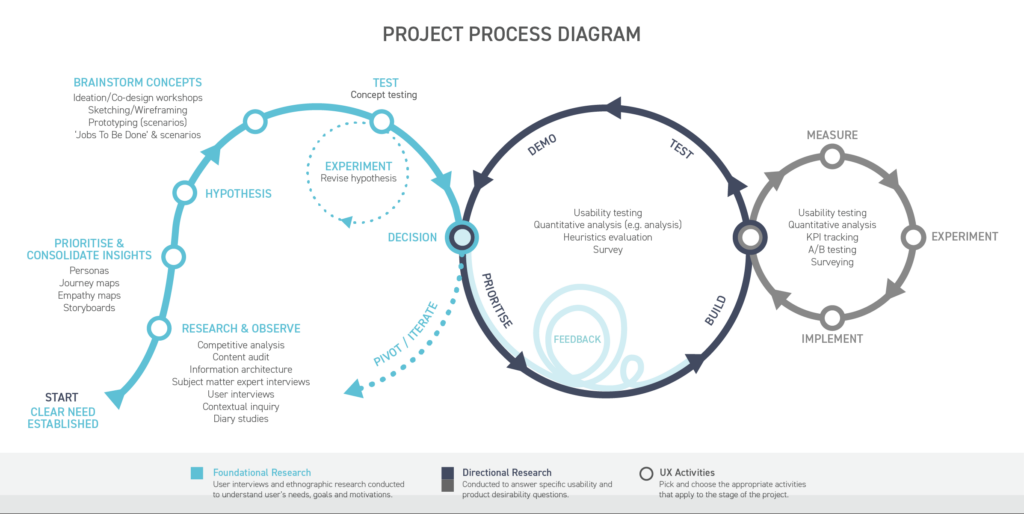Agile Innovation vs. Fixed-Cost Development
Which is Right for Your Business?
Choosing the Right Development Approach for Your Business
Every business embarking on a software development project faces a critical decision: How do you structure the engagement to ensure the best results? Traditionally, software development firms have pushed Agile methodologies as the best approach. And while Agile remains an excellent option for many businesses, it is not the only way to engage.
At 4mation, we understand that different businesses have different needs. That’s why we now offer two flexible engagement models:
- Agile Innovation – Ideal for businesses that need ongoing development, iteration, and adaptability.
- Fixed-Cost, Fixed-Outcome Development – Perfect for businesses that need certainty, clear timelines, and predictable costs.
So which one is right for your business? This blog will explore both models, their advantages, and how to decide which one aligns best with your goals.
What is Agile Innovation?
Agile Innovation is a flexible, iterative approach to software development. Instead of working towards a fixed, predefined outcome, Agile projects focus on continuous improvements and adaptability.
How Agile Works
With Agile, projects are broken down into sprints, usually lasting 2-4 weeks. Each sprint delivers a functional component of the software, allowing for ongoing feedback, adjustments, and refinements. This means businesses can:
- Respond to changes quickly – Priorities shift? No problem. Agile allows for continuous refinements.
- Test and improve continuously – Get real-world feedback early in the process, ensuring the final product truly meets business needs.
- Collaborate closely – Frequent updates, regular demos, and a focus on transparency keep stakeholders involved throughout.
Should You Choose Agile?
Agile Innovation is best suited for businesses that:
- Expect evolving requirements – If your project scope is likely to change based on market shifts or user feedback, Agile is ideal.
- Need ongoing software development – Perfect for businesses looking for continuous updates, improvements, and scalability.
- Prioritise flexibility over fixed pricing – Agile provides control over scope and priorities rather than a rigid, predefined cost.

However, Agile is not ideal for every business. Some projects require certainty, predictability, and fixed costs and that’s where our Fixed-Cost Development model comes in.
What is Fixed-Cost, Fixed-Outcome Development?
Fixed-Cost, Fixed-Outcome Development is designed for businesses that need clear scope, guaranteed delivery, and budget certainty. If your priority is predictable pricing and structured execution, this model ensures there are no budget overruns or timeline shifts.
How Fixed-Cost Development Works
With this model, we define the entire project upfront, including:
- Project scope – A clear and detailed breakdown of features and functionality.
- Timelines – Fixed milestones and delivery deadlines.
- Costs – A transparent, agreed-upon budget with no surprises.
Once the project is scoped and approved, our team executes according to the plan, ensuring the final product meets the agreed-upon specifications – on time and bug-free.
Should You Choose Fixed-Cost Development?
This approach is ideal for businesses that:
- Need budget certainty – If you have a set budget and cannot afford overruns, Fixed-Cost Development is the right choice.
- Have well-defined project requirements – If you know exactly what needs to be built, this model ensures execution without deviations.
- Require fast, reliable delivery – With structured milestones and guaranteed timelines, you’ll know exactly when your software will be ready.
Agile vs. Fixed-Cost: A Side-by-Side Comparison
| Feature | Agile Innovation | Fixed-Cost, Fixed-Outcome |
|---|---|---|
| Flexibility | High – adjust priorities and requirements as needed | Low – scope is predefined and locked |
| Budget Predictability | Variable – scope and requirements may evolve | High – costs are fixed upfront |
| Timeline Predictability | Moderate – evolving scope can shift delivery timelines | High – clear deadlines and milestones |
| Best for | Continuous development, AI-driven applications, iterative projects | Predefined projects with clear outcomes, budget-conscious businesses |
How This Fits into AI Development
As businesses modernise with AI-driven solutions, choosing the right engagement model is even more critical. Here’s how these models align with AI adoption:
Agile for AI Innovation
Many AI-powered solutions benefit from continuous iteration, data refinement, and evolving user needs. Agile allows:
- AI models to be tested and improved incrementally.
- Real-time feedback to refine AI predictions and automation.
- Scalable AI integration across multiple business functions.
Fixed-Cost for AI System Implementation
If you need an AI-powered application built to specific requirements, a Fixed-Cost model ensures:
- AI functionality is deployed within a clear, structured timeline.
- Budget certainty without unexpected development costs.
- A complete, bug-free AI system ready for business use.
How 4mation Helps You Make the Right Choice
At 4mation, we offer both Agile and Fixed-Cost engagement models to ensure businesses get the flexibility or predictability they need.
✅ Not sure which model is best for your project? We’ll help you assess your priorities, scope, and budget to determine the best fit.
✅ Want a risk-free AI development experience? Our Fixed-Cost model guarantees your project is delivered on time, on budget, and bug-free.
✅ Need to scale AI solutions? Our Agile Innovation approach allows for rapid iteration and continuous AI improvements.
Final Thoughts: Which Model is Right for You?
Choosing between Agile Innovation and Fixed-Cost Development depends on your business goals, project requirements, and budget considerations. If you value flexibility, scalability, and ongoing development, Agile is the way to go. If you need cost certainty, structured execution, and guaranteed delivery, Fixed-Cost is the better fit.
At 4mation, we empower businesses to engage in software and AI development on their terms. Whether you need adaptability or structured execution, we ensure your project is built for success.

